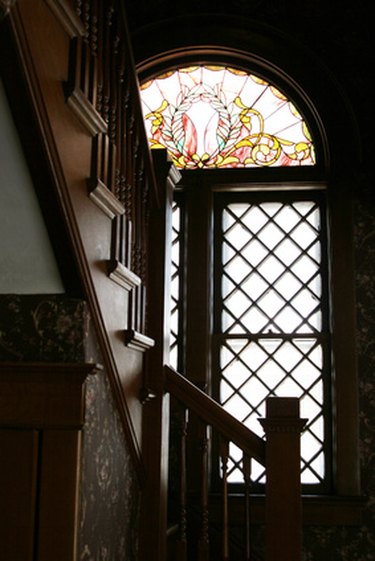
The standard staircase consists of three main components: the stringers function as the backbone of the structure supporting the treads that you step on and the risers that cover the gap between each tread. Depending on the location of the stairs, the tread may or may not feature a return. Interior stairs are far more likely to have tread returns than exterior or deck stairs.
Identification
Video of the Day
Stair tread return, also referred to as nosing, is the finished edge attached to the tread that extends beyond the riser and, if necessary, over the side or sides should the staircase have one or both sides away from a wall.
Video of the Day
Function
Its main function is cosmetic, but it is also a safety feature as it eliminates the rough, unfinished edge left behind when a tread is cut to size.
Types
Tread returns are available in a wide variety of styles and can be custom made using any number of router bits to shape them. The standard shape is a smooth, gradually rounded edge but beading, Roman Ogee, and stepped edges are also common.
Factory Return Treads
Treads can be purchased with the returns already attached, which saves both time and labor, but will likely limit the type of return to the standard rounded edge. When buying pre-attached return treads, first determine which side of your staircase, if any, is against the wall. Right-hand return tread (with the left side unfinished), left-hand return tread (the opposite) and double return tread (both sides finished) are all commercially available.
Custom Return Treads
Returns can also be added to existing treads as molding. Simply choose a length of return that matches the thickness and type of wood as the tread, rout (shape) as desired, cut to length, and attach to the tread using a biscuit and glue join, or a finish nailer.